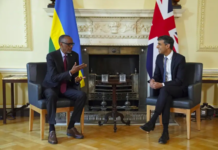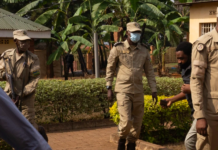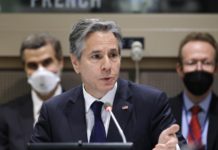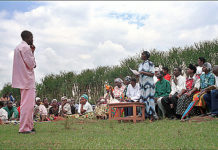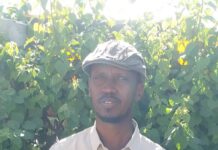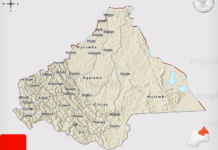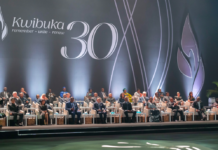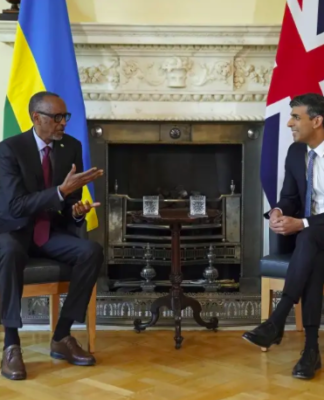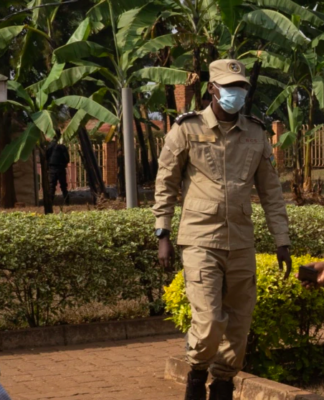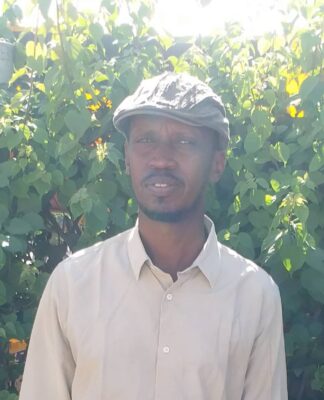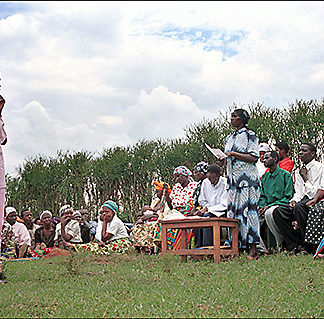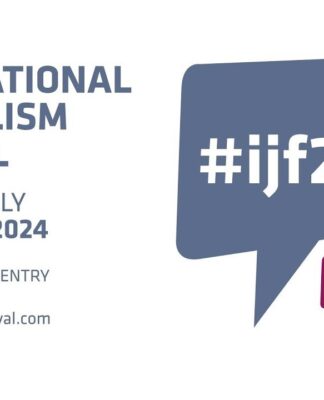It is almost impossible to understand the crime of genocide committed against Hutu people without going back to the history of Rwanda, Democratic Republic of Congo (DRC) and of Burundi. However, for brevity, the focus here is on a significant period starting from October 1996 to May 1997 in which hundreds of thousands of Rwandan, Congolese and Burundian Hutu men, women and children were indiscriminately massacred in their villages and refugee camps then hunted down while fleeing across the vast territory of Democratic Republic of Congo (Leaning, et al., 1996).

October 1996, Tutsi troops of the Rwanda-backed Alliance des Forces Démocratiques pour la Libération du Congo-Zaïre (AFDL) attacked refugee camps in Eastern DRC, home to 527,000 and 718,000 Hutu refugees in South-Kivu and North-Kivu respectively. Elements of the AFDL and, more so, of the Rwandan Patriotic Army (RPA) systematically shelled numerous camps and committed massacres with light weapons. These early attacks cost the lives of 6,800-8,000 refugees and forced the repatriation of 500,000 – 700,000 refugees back to Rwanda. (Ezimet, 2000)
As survivors fled westward of the DRC, the AFDL units hunted them down and attacked their makeshift camps, killing thousands more(Reyntjens, 2009). These attacks and killings continued to intensify as refugees moved westward as far as 1,800 km away. The report of the United Nations Joint Commission reported 134 sites where such atrocities were committed. On 8 July 1997, the acting UN High Commissioner for Human Rights stated that ‘about 200,000 Hutu refugees could well have been massacred’. These attacks against the Hutus were of systematic, methodological and premeditated nature.
1. THE TACTICS
According to Roberto Garretón, UN Special Rapporteur on the situation of human rights in Congo, “The tactic [consisted] of laying siege to camps before attacking them, […] summoning the inhabitants of predominantly Hutu towns to meetings in schools or churches, so as to massacre them; issuing appeals over the official radio stations urging all those hiding in the forests to come out for medical care and food aid, so as to murder them; and hampering or opposing humanitarian operations in the camps.” (Garretón, 1997; Ezemet, 2000)
Human Rights Watch and Medecins Sans Frontieres reported several incidents in which killings were carried out almost exclusively with knives, machetes or bayonets to avoid scaring off other refugees ahead on the road and to leave fewer traces of killing.
Women and Children
Children alongside the adults were killed indiscriminately, sometimes in particularly cruel ways, with blows from hatchets or with their head smashed against a wall or tree trunk. Others were reported burned alive in their homes, along with their families.
United Nations Human Rights Office of the High Commissioner’s DRC Mapping Exercise Report listed incidents of women who were raped before being killed, e.g. in the course of the refugee massacres at Hombo in December 1996. Women were also tortured and subjected to mutilation, particularly sexual, during these massacres.
Humanitarian Assistance – withheld and used as bait
On a number of occasions, attacking forces made it impossible to get humanitarian aid to starving, exhausted and sick refugees, either by blocking access to them or by relocating them out of the reach of assistance, thus depriving them of resources essential to their survival (OHCHR, 2010). Humanitarian aid agencies have been used repeatedly by the military to either locate refugees or lure them out of the forest in order to eliminate them (Médecins Sans Frontières, 1997).
Evidence concealed
The apparently systematic and widespread nature of the attacks, which targeted very large numbers of Rwandan Hutu refugees and members of the Hutu civilian population, resulting in their death, reveal a number of damning elements that, if they were proven before a competent court, could be classified as crimes of genocide. (OHCHR, 2010, p. 280)
The massacre of refugees went on concomitantly with the clean-up of grave sites. According to UN investigations (Garretón, 1997), Human Rights Watch (Campbell, 1997), and Medecins Sans Frontieres (Bradol & Guibert, 1997), the perpetrators of the massacre of refugees made concerted efforts to conceal the evidence by cleansing massacre sites, burning corpses and killing or intimidating witnesses.
Massacres of Hutu of all nationalities
It must be noted that many Burundian Hutu refugees living in South Kivu shared the fate of their Rwandan and Congolese companions. Many were killed when their camps were attacked or while fleeing to the west with the Rwandans. Others drowned when they attempted to cross Lake Tanganyika in search of safety. Tutsi soldiers under AFDL massacred Congolese Hutu people in Kivu villages (ex. Musekera 20th October 1996, Bisoko, Mugwata 30th October 1996, Mugogo market 18th November 1996, etc…) where they had lived for centuries.
2. ACTS COMMITTED VIS-À-VIS ARTICLE 2 OF THE GENOCIDE CONVENTION
The apparent systematic and widespread attacks reveal a number of inculpatory elements that characterized them as crimes of genocide. All these killings seem premeditated and are condemnable by international law.
Two separate reports by the United Nations, in 1997 and 1998, examined whether or not crimes of genocide had been committed against Hutu and other refugees in the DRC. In both cases, the reports concluded that there were elements that might indicate that genocide had been committed:
- “At the time of the incidents covered by this report, the Hutu population in Zaïre, including refugees from Rwanda and Burundi, constituted an ethnic group within the meaning of the Convention on the Prevention and Punishment of the Crime of Genocide of 1948” (OHCHR, 2010, p. 280). The scale of the crimes committed by the APR against hundreds of thousands of Hutu of all nationalities [Rwandan, Congolese & Burundian] including the Hutu established in the DRC decades confirms that it was all Hutu, as such, who were targeted” (OHCHR, 2010).
- The extensive use of edged weapons (primarily hammers) and the systematic nature of the massacres of survivors (children, women, the elderly and the sick, undernourished) after the camps had been taken indicate that the numerous deaths cannot be attributed to the hazards of war or to collateral damage. “The majority of the victims were children, women, elderly people and the sick, who were often undernourished and posed no threat to the attacking forces. Numerous serious attacks on the physical or mental integrity of members of the group were committed, with a very high number of Hutus shot, raped, burnt or beaten” (OHCHR, 2010, p. 14).
- The attacks took place in each locality where Hutu refugees were detected by the APR on a very large area of the Congolese territory from East to West and the relentless pursuit of Hutu refugees lasted months. The humanitarian assistance intended for Hutu refugees was deliberately blocked by the Rwandan army, particularly in the Orientale province, thus depriving them of resources essential to their survival (OHCHR, 2010).
The massacre of refugees in Congo was a tragedy aimed at eliminating a large portion of the Hutu ethnic group and, according to Article 2 of the 1948 Genocide Convention, it qualify as a crime of genocide. Such crimes call for a further investigation by a competent, independent and impartial body to bring to justice of those responsible for the violations committed (Amnesty International, 1998).
In an interview with Washington Post on 9 July 1997, Rwandan president Paul Kagame (then Defence Minister) recognized that Rwandan troops had played a key role in this AFDL campaign. According to President Paul Kagame, the campaign strategy comprised three elements: a) destroy the refugee camps, b) destroy ex-FAR and Interahamwe [a criminal militia that committed the crime of genocide against Tutsi people in Rwanda in April-July 1994] based in and around the camps and c) overthrow the Mobutu regime (Campbell, 1997).
Following her research into complete history of the Rwandan genocide and the crimes of the Rwandan Patriotic Front (RPF), through unparalleled interviews with RPF defectors, former soldiers and atrocity survivors, supported by documents leaked from a UN court, Judi Rever, a Canadian investigative journalist and author, alleged that President Paul Kagame is “ultimately responsible for the killing of an estimated 200,000 Rwandan Hutu and Congolese Hutu in Zaïre/DRC in 1996-97 and countless Hutus who returned to Rwanda from refugee camps between 1995 and 1998” (Rever, 2018).

The failure of the UN Security Council to follow up on the recommendations on the massacres in the Democratic Republic of Congo (DRC) is once more a lost opportunity to bring an end to the climate of impunity that so tragically prevails in the African Great Lakes region today. The crimes amounting to genocides committed against Hutu ethnic people by RPF soldiers are well documented. However, to date, no single individual has been brought to justice for the above crimes.
Some of the survivors of this tragedy are still trapped in refugee camps in DRC where they are subjected to the same cruelty from the same perpetrators, 22 years on. The denial and impunity of this genocide have paved the way for new war crimes and crimes against humanity in the African Great Lakes region.
The prevention of genocide cannot be achieved without fighting impunity. It is important to fight impunity and to hold the perpetrators accountable to their crimes. Dealing with past crimes is a pre-requisite for prevention. Concerted efforts to deal with the past could serve to address fundamental grievances. There are millions of people from the Hutu community whose experience of genocide has not yet been recognized nor justice provided
3. RECOMMENDATIONS
“The failure of the Security Council to follow-up effectively on the recommendations of the UN’s own report shows scant regard for the victims of these crimes” (Amnesty International, 1998)
- All organizations that genuinely work for genocide prevention and genocide response must stand together in the recognition, condemnation, and punishment of Hutu genocide.
- The United Nations should follow-up their own reports recommendations and recommendations of other human rights organizations that reported on these atrocities.
- United Nations should officially recognize the genocide committed against Hutus and ensure that ‘never again’ policy happens starting by holding into account the perpetrators.
- All organizations that genuinely work for genocide prevention should ensure that victims of the genocide that are still in refugee camps and forests of the Democratic Republic of Congo are recognized as refugees and securely settled.
- African Union and governments in the African great lakes region should establish robust monitoring mechanisms that can detect political and conflicts dynamics that may lead to more genocides in the region.
REFERENCES
Amnesty International, 1998. Democratic Republic of Congo: A year of dashed hopes, s.l.: Amnesty International.
Amnesty International, 1998. UN Security Council shamefully abandons victims in Democratic Republic of Congo, London: AI.
Bradol, J. H. & Guibert, A., 1997. Le temps des assassins et l’espace humanitaire, Rwanda, Kivu, 1994-1997. Herodote, pp. 116-49.
Campbell, S., 1997. What Kabila is Hiding: Civilian Killings and Impunity in Congo, s.l.: Human Rights Watch.
Ezimet, K. N., 2000. The Massacre of Refugees in Congo: A Case of UN Peacekeeping Failure and International Law. The Journal of Modern African Studies, 38(2), pp. 163-202.
Garretón, R., 1997. Report on the Situation of Human Rights in Zaïre, prepared by the Special Rapporteur in accordance with Commission resolution 1996/77, New York: United Nations, Economic and Social Council (UNESC).
Leaning, J., Sollom, R. & Austin, K., 1996. Investigations in Eastern Congo and Western Rwanda, Boston: Physicians for Human Rights.
Médecins Sans Frontières, 1997. Forced Flight: A Brutal Strategy of Elimination in Eastern Zaire, Paris: MSF.
OHCHR, 2010. Report of the Mapping Exercise Documenting the Most Serious Violations of Human Rights and International Humanitarian Law Committed Within the Territory of the Democratic Republic of the Congo Between March 1993 and June 2003, Geneva: Office of the United Nations High Commissioner for Human Rights.
Rever, J., 2018. In Praise of Blood, The Crimes of the Rwanda Patriotic Front. Toronto: Random House Canada.
Reyntjens, F., 2009. The Great African War: Congo and Regional Geopolitics, 1996–2006. New York: Cambridge University Press.
Source: GLOBAL CAMPAIGN FOR RWANDANS HUMAN RIGHTS

